Colloquia for Fall 2022
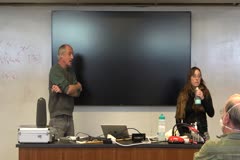
"The implications of time varying climate feedbacks for precipitation"
December 08, 2022
Angeline Pendergrass
Hosted by Chris Kummerow
Climate sensitivity varies on multiple timescales with different magnitudes as climate feedbacks evolve over time. This timescale dependence of climate feedbacks can be understood through the radiative fluxes at the top of the atmosphere. If TOA fluxes respond on multiple timescales, then surface fluxes may as well, which would lead to timescale dependence of global mean precipitation. We…
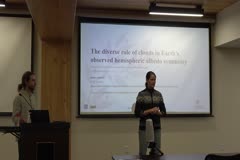
The diverse role of clouds in Earth’s observed hemispheric albedo symmetry
December 02, 2022
Aiden Jonsson
Hosted by Maria Rugenstein
Observations of Earth’s radiative energy system have shown that Earth’s albedo is symmetric between the northern and southern hemispheres, despite significant hemispheric differences in the clear-sky albedo due to the distribution of land and aerosol sources. This symmetry is given by the annual mean cloud cover compensating almost exactly for the clear-sky albedo asymmetries. I will…
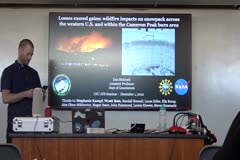
Losses exceed gains: wildfire impacts on snowpack across the western U.S. and within the Cameron Peak burn area
December 01, 2022
Dan McGrath
Hosted by Pat Keys
Wildfires are increasingly impacting high-elevation forests in the western United States that accumulate seasonal snowpacks. The snowpack’s mass and energy balance is altered post-fire due to the loss of the forest canopy and deposition of sooty material on the snow surface. This can result in declines in peak snow water equivalent, faster melt rates, and earlier snow-free dates, thus…
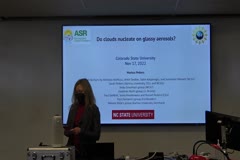
Do clouds nucleate on glassy aerosols?
November 17, 2022
Markus Petters
Hosted by Sonia Kreidenweis
The importance of amorphous glassy phase states has long been recognized by the scientific community. About a decade and a half ago, a suite of first studies showed that glassy phase states are common in atmospheric particles. These initial studies identified several important implications for the atmospheric sciences. First, slowing the rate of water condensation onto particles due to the…
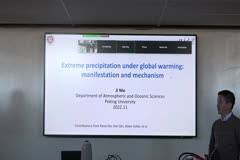
Extreme precipitation under global warming: manifestation and mechanism
November 15, 2022
Ji Nie
Hosted by Department
Responses of extreme precipitation to global warming are of great importance to society and ecosystems. In this talk, we demonstrate several significant manifestations of climatic responses of extreme precipitation and the underlying mechanisms. We first introduce recent advances in understanding the regional patterns of extreme precipitation sensitivity by the dry and moist decomposition. By…
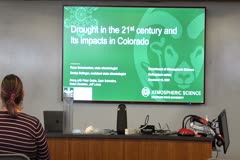
Drought in the 21st century and its impacts in Colorado
November 10, 2022
Russ Schumacher and Becky Bolinger
Hosted by Kristen Rasmussen
Since the year 2000, drought has been in place nearly continuously in Colorado. Drought and water availability have always been a challenge in the western United States, due to its arid, and highly variable, climate. But the impacts of drought have accelerated since the turn of the millennium. Much of the western U.S. relies on water that originates from Colorado, and demands for that water…
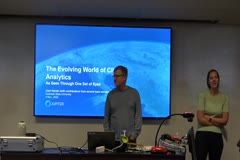
The Evolving World of Climate Analytics as Seen Through One Set of Eyes
November 03, 2022
Josh Hacker
Hosted by Elizabeth Barnes
As the world moves to address the climate crisis, many entities are looking to quantify their exposure to physical hazards, and associated risks, in a changing climate. Global economic sectors including financial services, utilities, and various industrial sectors are rapidly engaging with physical hazard and risk analytics providers to address expanding regulatory mandates, shareholder…
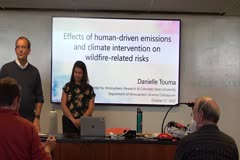
Effects of human-driven emissions and climate intervention on wildfire-related risks
October 27, 2022
Danielle Touma
Hosted by Jim Hurrell
Anthropogenic climate change is already driving large increases in wildfire frequency and extent globally, a trend expected to continue throughout the 21st century. In this talk, I first disentangle the roles of anthropogenic industrial aerosol and greenhouse gases (GHG) emissions on extreme fire weather – i.e., dry, warm, and windy conditions that lead to fire ignition and spread. By…
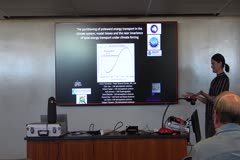
The partitioning of poleward energy transport in the climate system; model biases and the near invariance of total energy transport under climate forcing
October 20, 2022
Aaron Donohoe
Hosted by Maria Rugenstein
The total (atmosphere plus ocean) poleward energy transport (PET) is nearly climate state invariant in an ensemble of simulations spanning from the Last Glacial Maximum to a world with carbon dioxide concentrations of four times the preindustrial values. In contrast, the PET differs by 20% between different models in simulations of the present-day climate. Here, we ask why PET is insensitive to…
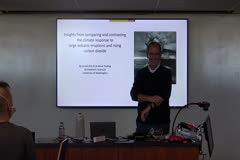
Insights from comparing and contrasting the climate response to large volcanic eruptions and rising carbon dioxid
October 13, 2022
Cecilia Bitz
Hosted by Emily Fischer and Jim Hurrell
It has been proposed that the climate response to recent large volcanoes can inform estimates of current and anticipated climate change driven by rising carbon dioxide levels in the atmosphere. Such proposals hinge on the assumption that climate feedbacks are largely the same for volcanic and carbon dioxide forcing. If climate feedbacks were the same, then the climate response to large…
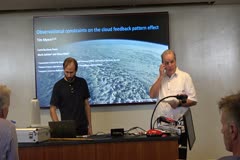
Observational constraints on the cloud feedback pattern effect
October 06, 2022
Tim Myers
Hosted by Dave Randall
Historically, the response of clouds to planetary warming has been among the most uncertain of all climate feedbacks. In this seminar, I highlight advances in observational methods that have substantially reduced this uncertainty. Recent observational evidence stemming from the framework of cloud-controlling factor analysis suggests that, in response to increasing CO2, low clouds over the…
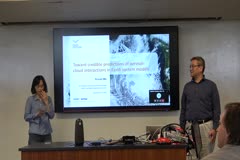
Toward credible predictions of aerosol-cloud interactions in Earth system models
September 29, 2022
Po-Lun Ma
Hosted by Christine Chiu
The role of aerosol-cloud interactions (ACI) in the climate system is a major source of uncertainty in projections of Earth’s future climate and in interpreting how the climate has evolved in the past. Over the last decade, efforts have been made to improve understanding and to address deficiencies in Earth system models (ESMs), including increasing model resolution, improving the…
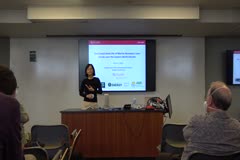
The Complicated Life of Boundary Layer Clouds over the Eastern North Atlantic
September 22, 2022
Mark A. Miller
Hosted by Christine Chiu
The complex boundary layer cloud system over the Eastern North Atlantic (ENA) exerts significant impacts on the global and regional radiation budget. Observed cloudiness over the ENA has been decreasing over the past twenty years consistent with CMIP5 simulations, but the underlying processes associated with these changes involve complicated feedbacks that often blur causality. Boundary layer…
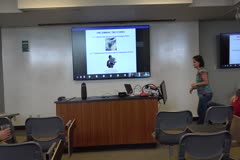
Part 1: Saharan Dust Transport by African Easterly Waves; Part 2: Photography and the Advancement of Atmospheric Science
September 15, 2022
Terry Nathan
Hosted by Phil Klotzbach
Part 1: Saharan Dust Transport by African Easterly Waves Saharan dust storms are among the most striking natural events on Earth. Born of land-atmosphere interaction, the storms emerge from complex processes that involve dust emission by an array of wind systems that operate over North Africa. In the first part of my seminar, I will present my recent research on the scale-dependent transport…
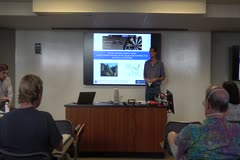
The Data Assimilation Research Testbed: An Introduction to Powerful Nonlinear and Non-Gaussian Data Assimilation Tools
September 08, 2022
Jeff Anderson
Hosted by Peter Jan van Leeuwen
The development of numerical weather prediction was one of the great scientific and computational achievements of the last century. Computer models that approximate solutions of the partial differential equations that govern fluid flow and a comprehensive global observing network are two components of this prediction enterprise. An essential third component is data assimilation (DA), the…
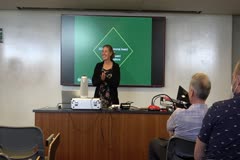
2022 Herbert Riehl Memorial Award and Alumni Award Recipients Technical Presentations
August 25, 2022
Kevin Yang and Ting-u Cha
Hosted by Eric Maloney
"Near-cloud aerosol retrieval using machine learning techniques, and implied direct radiative effects" and Polygonal Eyewa/1 Asymmetries During the Rapid Intensification of Hurricane Michael (2018)
